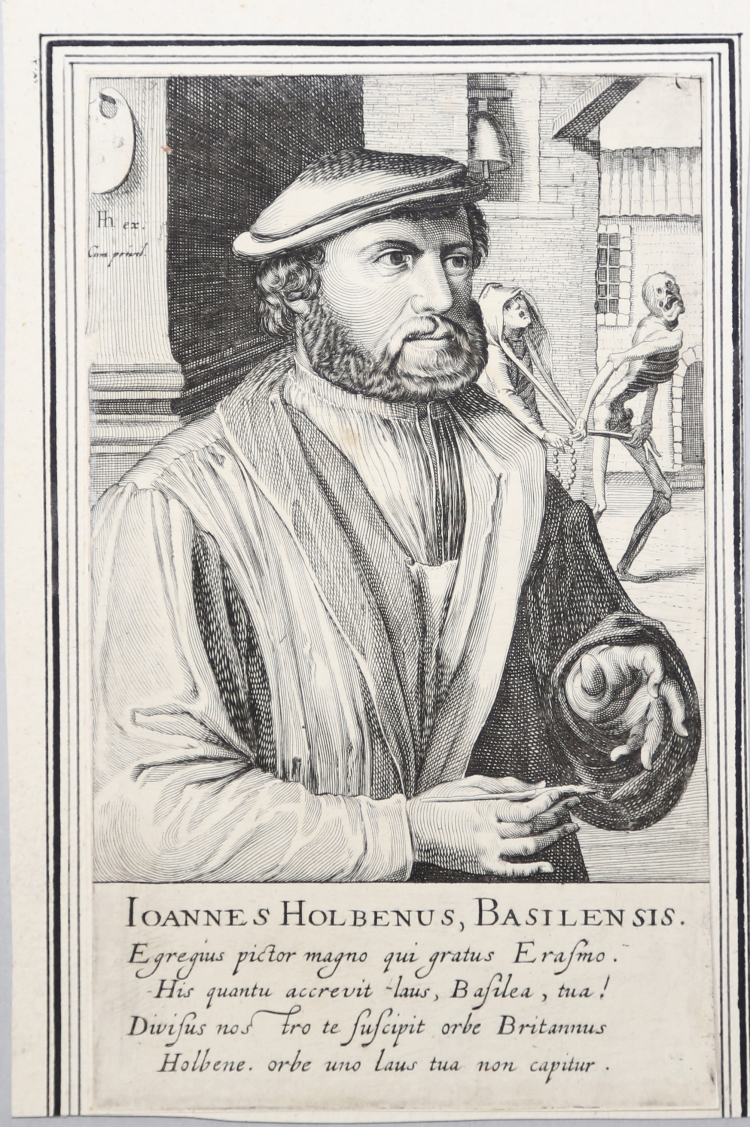



| Reference: | S16945 |
| Author | Simon FRISIUS |
| Year: | 1610 ca. |
| Measures: | 120 x 195 mm |


| Reference: | S16945 |
| Author | Simon FRISIUS |
| Year: | 1610 ca. |
| Measures: | 120 x 195 mm |
Engraving, from the famous Pictorum aliquot celeberium praecipue Germanie Inferioris, magnificent collection of portraits printed by Henricl Hondius in Den Haag, around 1610.
The work is made up of 69 portraits of the most important Flemish and German painters.
The engravings have been mainly realized by Simon Frisius, even though some of them have been signed by Hondius himself and others by Andries Stock and Robert Baudous.
Magnificent work, printed on contemporary laid paper, trimmed to platemark, laid on old collection paper, in excellent condition.
|
Hollstein 28; The New Hollstein, Hendrick Hondius, 80-115 (p. 90-105); Hollstein VII, Frisius, p. 32.
|
Simon FRISIUS (Harlingen 1580 circa – Den Haag 1629)
|
Frisius is regarded as one of the first to bring etching to perfection. Abraham Bosse, in his treatise on the art of engraving, observes that the first artist to whom he was indebted for intelligence was Simon Frisius, whom he thinks was entitled to great credit, as being one of the first to handle the point with freedom and facility. His etchings are bold and masterly; and in his hatchings he approaches the neatness and strength of the graver. The prints of De Vries are scarce, and are much esteemed. The small figures which he occasionally introduced into his landscapes are correctly drawn. He frequently marked his plates S. F. fecit, but sometimes with the word fecit only. He started his career in Paris, and worked in Rouen and Amsterdam before moving to the Hague in 1611 where he became a member of the Confrerie Pictura. He travelled in France, Spain, Germany, Bohemia, and Russia
|
|
Hollstein 28; The New Hollstein, Hendrick Hondius, 80-115 (p. 90-105); Hollstein VII, Frisius, p. 32.
|
Simon FRISIUS (Harlingen 1580 circa – Den Haag 1629)
|
Frisius is regarded as one of the first to bring etching to perfection. Abraham Bosse, in his treatise on the art of engraving, observes that the first artist to whom he was indebted for intelligence was Simon Frisius, whom he thinks was entitled to great credit, as being one of the first to handle the point with freedom and facility. His etchings are bold and masterly; and in his hatchings he approaches the neatness and strength of the graver. The prints of De Vries are scarce, and are much esteemed. The small figures which he occasionally introduced into his landscapes are correctly drawn. He frequently marked his plates S. F. fecit, but sometimes with the word fecit only. He started his career in Paris, and worked in Rouen and Amsterdam before moving to the Hague in 1611 where he became a member of the Confrerie Pictura. He travelled in France, Spain, Germany, Bohemia, and Russia
|